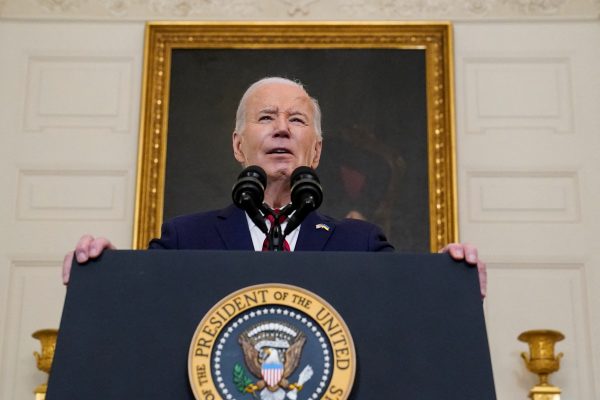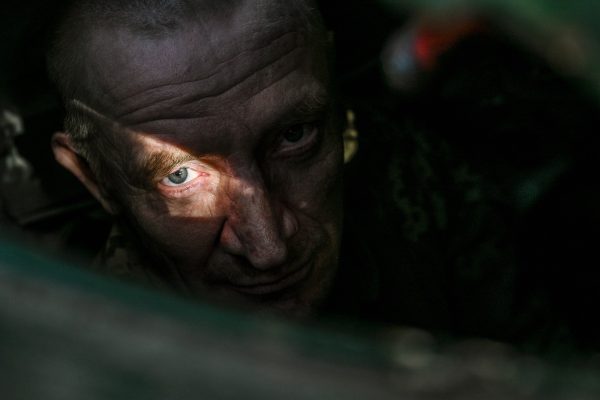After much debate, the West’s oil price cap was introduced in December at $60 a barrel, some way below the current market price for benchmark Brent crude of about $85.
The cap, plus broader Western sanctions on Russia, and energy in particular, has made it difficult and reputationally challenging for international businesses to buy Russian oil and energy. Complications in trading in Russian oil, in particular, have now resulted in a large (30%-40%) discount being applied to Russian oil. The oil price cap might have been set at $60, but the Urals oil blend is now trading significantly lower than this.
The net result of all the above is that Russia has lost more than half the physical volume of its former gas sales to Europe, and prices of gas in Europe are now back to pre-February levels. This could potentially see Russia lose $50bn in annual business in 2023.
As for oil, if Urals continues to trade at a 30%-40% discount to Brent, even if Brent was to trade in the mid-70s, Russia could see a further $100bn shaved off oil export receipts. Potentially that would see a total $150bn loss this year.
Lower energy export receipts will also slow Russia’s broader real GDP growth, producing a double whammy on the fiscal side, as tax income also fell.
In 2022, Russia’s budget deficit is thought to have hit around 2.3% of GDP. But with Urals oil prices now trading well below $50 a barrel, the deficit, now also bearing the burden of increased military and social spending, could well skyrocket to 6-7% of GDP. While the Ministry of Finance can allay this somewhat by allowing the ruble to weaken, increasing the ruble value of lower dollar oil receipts, this would raise broader risks to macroeconomic financial stability and likely accelerate capital flight.
All of which goes to underline the error of Vladimir Putin’s calculations when he launched the full-scale invasion of Ukraine in February last year. One strand of Kremlin thinking had concluded that efforts to accelerate the carbon energy transition in Europe would reduce its energy dependence, and so lower Russia’s leverage over Ukraine. Putin’s assumption (at least in part) that this was a matter of now or never was in error. Indeed, by late 2021, Europe had almost reached maximum dependency on Russian energy, particularly gas, and thereafter it was only likely to fall.
The dilemma that Putin caused Europe was this: the continent was asked whether, given its need for gas to heat homes and power industry, it cared more about continuing this relatively cheap and critical supply, or whether it cared more about Ukraine, a country for which it had only ever shown lukewarm enthusiasm.
In the first few months after the all-out invasion, and as Europe headed into the winter, there was much to suggest that Putin’s calculation was well-judged. Oil prices rose $20-25 a barrel in the period immediately after the invasion to over $105 a barrel. Meanwhile, gas prices skyrocketed, rising more than 20-fold in some cases by the late summer, as markets fretted over European gas storage levels and the ability of Europe to survive the winter with much reduced Russian supplies. The talk was about popular discontent, energy rationing, supply disruptions, and a potentially catastrophic hit to European growth and economic activity.
Western sanctions limiting Western purchases of Russian oil and energy were seen as counterproductive, playing into Russia’s hands and driving prices higher, and perversely bolstering revenue streams to Russia. As of November, the country’s budget oil revenues were running around one-third higher year-on-year, bringing confident predictions from Russian government officials that the full-year budget deficit would improve on the 1.2% of GDP target deficit. Balance of payments data were similarly encouraging for Russia, with the Central Bank reporting the current account surplus rose to $226bn for the first 11 months of 2022, more than double the prior year’s $108bn surplus.
Putin seemed to have all the cards, and much suggested Europe would eventually buckle.
So what did he get wrong?
First, higher prices produced a striking demand response. German gas consumption has plunged by around one quarter.
Second, thus far the west European winter has been relatively mild — ironically it is proving harsh in Russia itself.
Third, Western solidarity has held, and Europe has managed to source alternative sources of energy, particularly liquefied natural gas (LNG) imports from North Africa, the US, and the Middle East. As a result of the above factors, European gas storage levels have been sustained at seasonally high levels, and demand for Russian energy has dropped.
Fourth, after much debate amongst Western allies, an agreement was reached on the $60 oil price cap barrel.
And fifth, the war in Ukraine has negatively impacted global growth, and with it demand for commodities, particularly oil and energy.
In conclusion, through his war in Ukraine Putin seems to have finally cooked Russia’s golden energy goose. Europe will and is accelerating its energy transition and diversification away from Russia which will cut the volume demand for Russian energy.
But the war has hit global demand and prices which will compound the volume losses to Russia with a price effect. The overall result will be a damaging hit to Russian macro stability, accelerating Russia’s longer-term economic malaise and decline.
Timothy Ash is a Senior Emerging Markets Sovereign Strategist at RBC BlueBay Asset Management. He is an Associate Fellow at Chatham House on their Russia and Eurasian program.
The opinions in this article are those of the author.
Europe’s Edge is CEPA’s online journal covering critical topics on the foreign policy docket across Europe and North America. All opinions are those of the author and do not necessarily represent the position or views of the institutions they represent or the Center for European Policy Analysis.





